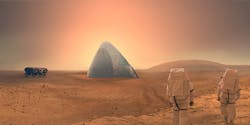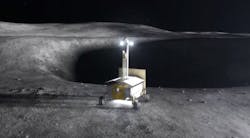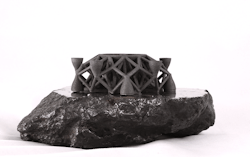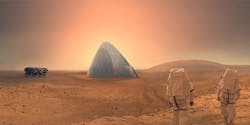Mining Materials for 3D Printing in Space
Many headlines talk about a multi-planet existence; that is, people from Earth being able to exist on other planets. They have almost been romanticizing the thought. While many debate if we could overcome challenges such as the radiation exposure, organizations like NASA and companies like Space X continue to push forward. There are many concerns and challenges, but something my economics professor once told me keeps playing back in my head—there is no such thing as a free lunch.
“Everything has a finite amount of resources. Everything has a cost and benefit,” he would regularly say. With limited resources, how can we populate multiple planets with only one livable environment? Fortunate for us, all of our resources originated in space.
One of the first missions set to harvest materials in space is NASA’s Resource Prospector to launch as early as 2020. This mission will send a rover to the far or “dark” side of the moon to mine for elements such as heavy hydrogen and oxygen we already know exist there from past trips. These types of elements can help make rocket fuel and other basic materials required for in-space manufacturing.
One of the first missions set to harvest materials in space is NASA’s Resource Prospector to launch as early as 2020. (Courtesy of NASA)
The rover’s overall mission: find healthy mineral deposits that will indicate a good location to build a launchpad for mission to Mars.
Carl Sagan famously said, “We are all made of star stuff.” The only way deep space exploration, or a multiple planet existence can move from sci-fi to reality is to use resources, or “star stuff” found in space. Asteroids are mainly nickel and iron. However, even CEO of Planetary Resources Chris Lewicki says, “What we all go after first is simple, it’s water.” This aligns with the same hydrogen and oxygen NASA will be mining the moon for to discover an optimum launchpad site.
Of in-situ* resource utilization (ISRU), ASM International, a materials information society, writes, “By 2025, mining asteroids may be as commonplace as digging a hole in your backyard.” Already, both the Near Earth Asteroid Rendezvous (NEAR) Shoemaker and the European Space Agency’s Philae lander have landed on asteroids (in 2001 and 2014, respectively). In addition, the ASM article talked about an asteroid mining company—the very same Planetary Resources mentioned above. Planetary Resources made a point at the Consumer Electronics Show in 2016 that mining asteroids was the future. It did this by using 3D printing and metal from a meteorite to produce a part.
The first part 3D-printed from metal harvested from a meteorite. (Courtesy of Planetary Resources)
In addition, 3D printing may be the process of how things are built in space. Scientists have already 3D-printed plastic objects in space, and they believe we can 3D-print metals. However, it might be simpler than this. If water freezes on the surface of the planets we are looking to build on, and there is hydrogen and water as a resource on these bodies, 3D printing ice in the shape of buildings might provide a robust housing. Sound nuts? NASA didn’t think so and awarded $25,000 to a team that designed a Mars Ice House for NASA’s 3D-printed habitat challenge. At least until we can figure out the space elevator, harvesting celestial bodies might be the next step to helping us better understand our universe.
*in-situ: In its original place
NASA awarded $25,000 to a team that designed a Mars Ice House for its 3D-printed habitat challenge.




